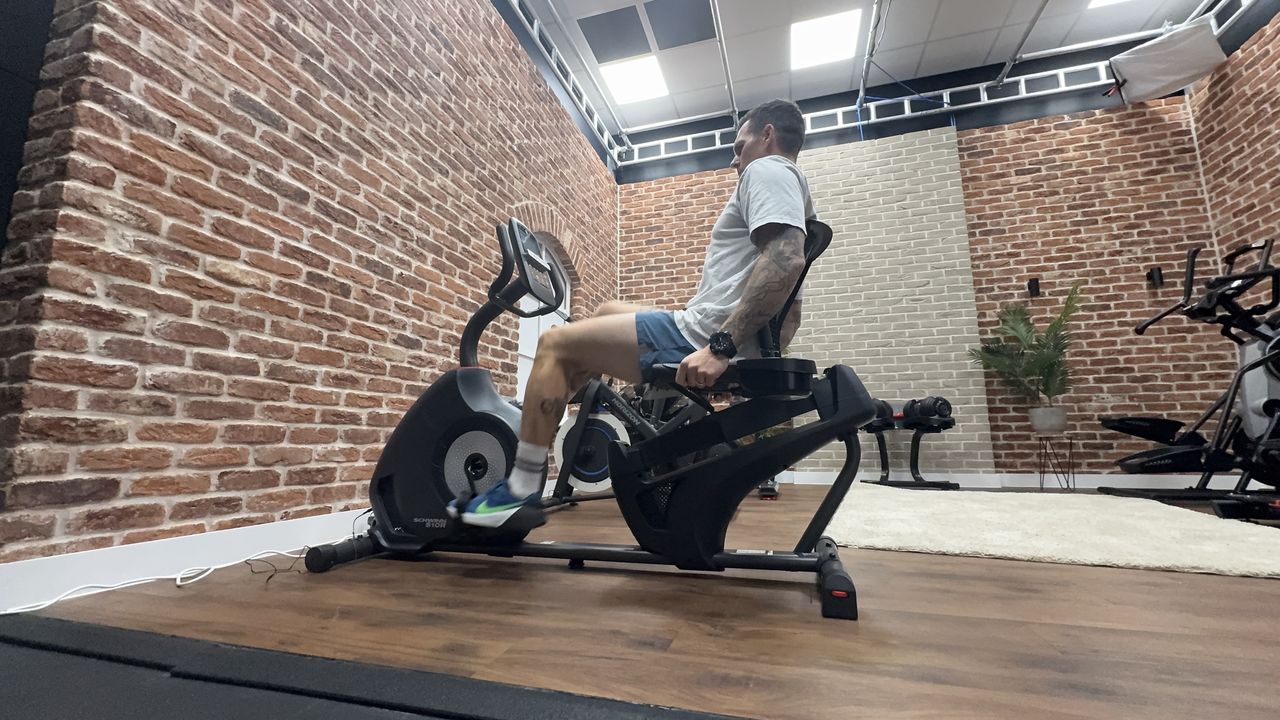
Despite what you might see plastered all over social media, your fitness sessions don’t always have to be breathless, sweaty undertakings that leave you crumpled on the floor like a floundering fish out of water.
In fact, numerous studies show the benefits of steady-state cardiovascular exercise over more intense forms, such as Tabata training or HIIT workouts. In short, you can achieve excellent fat-burning and cardiovascular improvements without always going all-out.
One fantastic piece of equipment for this type of exercise is the recumbent bike, simply because the more relaxed seating position generally makes it harder to achieve the sort of mammoth, high-effort sprints you might associate with a more dedicated cycling trainer.
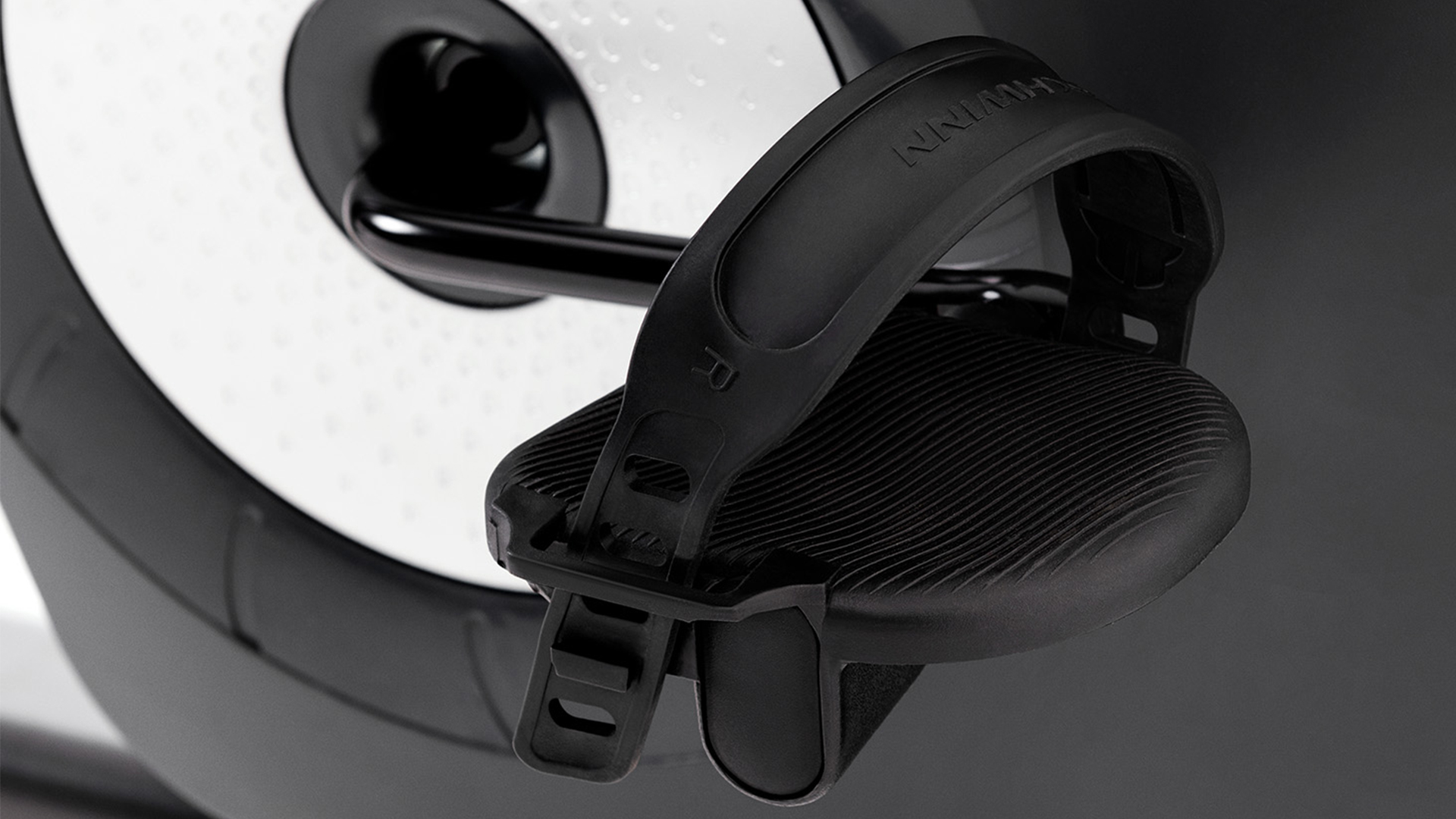
At around £599, the Schwinn 510R Recumbent Bike is a budget option for those looking to inject some casual fitness into their routine, without the potential pitfalls of a more traditional exercise bike.
The seating position means there is less pressure on the hip and knee joints, while there’s no need to hunch over the handlebars like a Tour de France pro, making it much easier on the lower back.
This Schwinn model undercuts premium rivals like the Life Fitness recumbent I tested earlier in the year, yet the brand is a well-respected name in cycling, seeing that it has been building bikes since the 1890s.
Easy build
The Schwinn 510R Recumbent Bike arrives in a single, manageable box, though you’ll need to do a bit of DIY to get it ready.
There’s no white-glove delivery service here (like there is with Peloton), you’ll be bolting it together yourself.
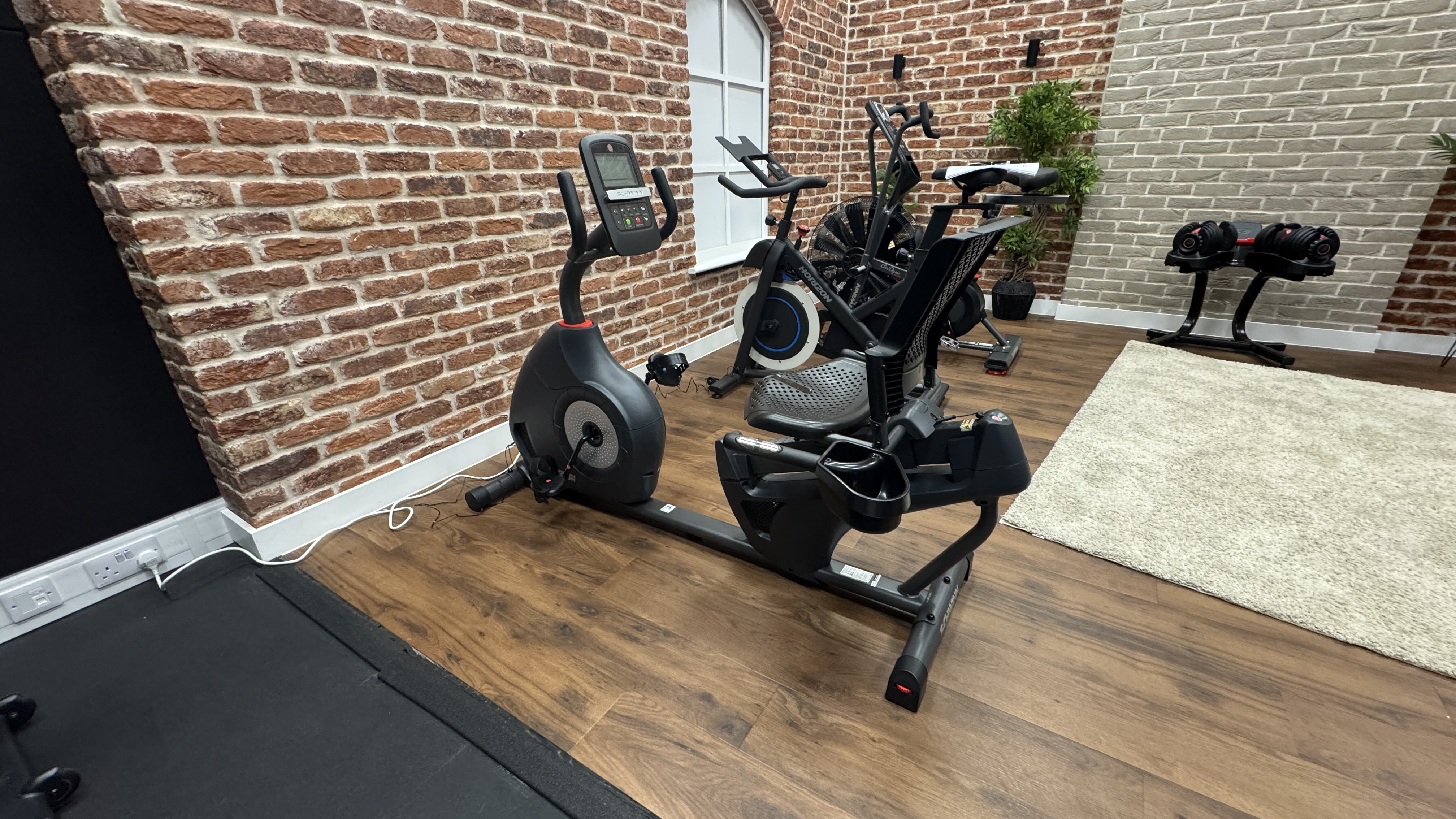
Speaking to those in the know, solo assembly takes just under an hour for a complete novice (my bike was already made-up). The instructions are adequate rather than brilliant, while the build quality is also perfectly acceptable, rather than gym-level robust.
When it’s all put together, the Schwinn 510R Recumbent Bike has a footprint of 163cm long and 70cm wide, so it’s fairly compact for a recumbent model.
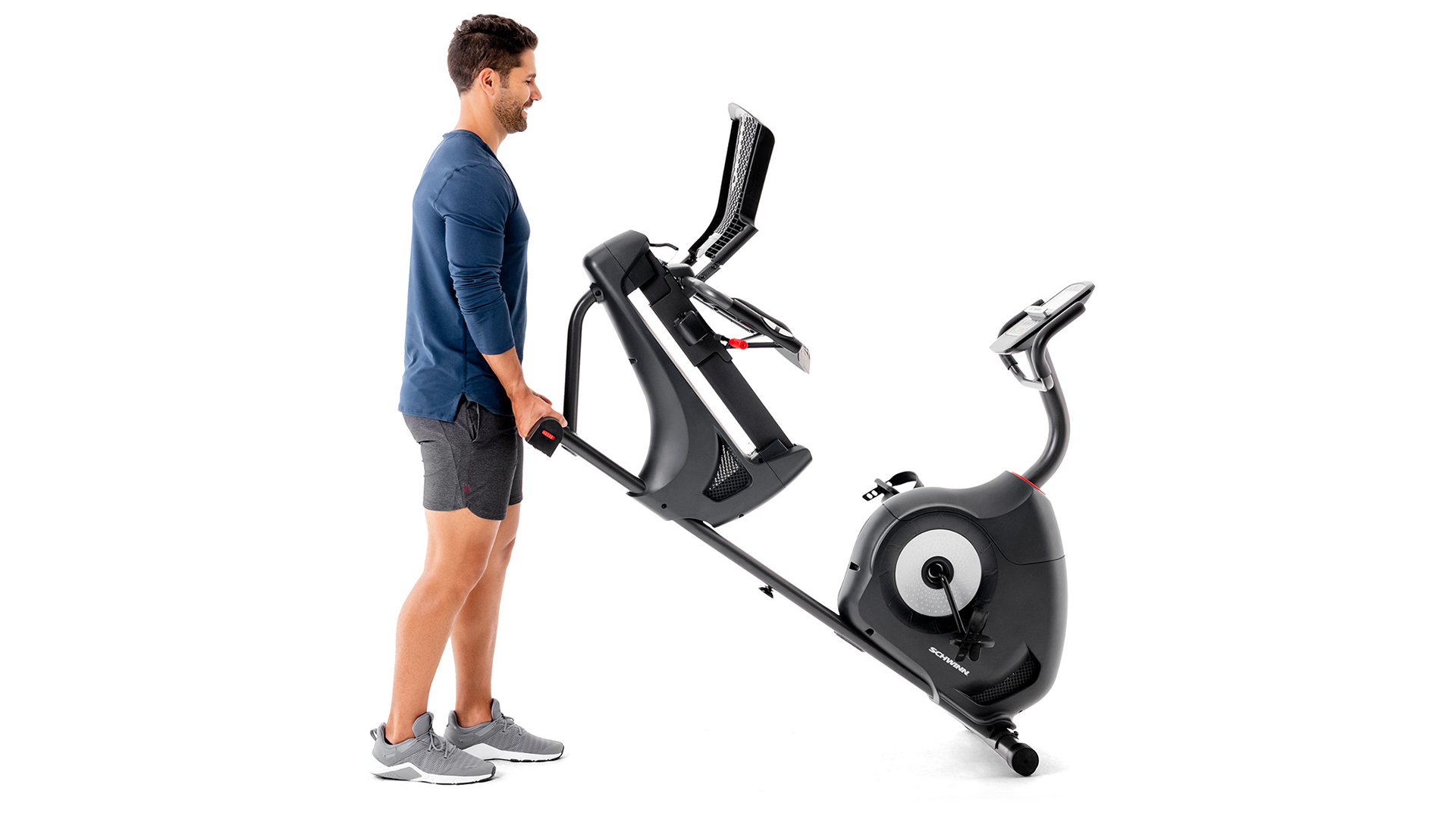
It doesn’t fold, but at just 37kg, it’s light enough to move if you need to reclaim floor space after a workout. The step-through frame is a thoughtful touch too, as it makes mounting and dismounting easy, which is ideal for those with limited mobility or anyone rehabbing from injury.
The overall design is solid, even if it doesn’t scream luxury. There are a few plastic covers over the bolts that feel a bit flimsy, and the casing around the 7kg flywheel at the front lacks the premium heft of high-end models.
Still, once it’s built, everything feels sturdy, with no rattles or wobble under load.
A comfortable cruise
For me, the biggest selling point of any recumbent bike is comfort, and the Schwinn 510R Recumbent Bike gets that part spot on. The seat is large, cosseting and fully adjustable, allowing you to find your ideal riding position easily. The vented backrest provides solid lumbar support, encouraging a relaxed posture that’s easy to maintain for long rides.
Plus, it stops the dreaded build-up of back sweat that inevitably appears during those longer sessions in the hot seat.
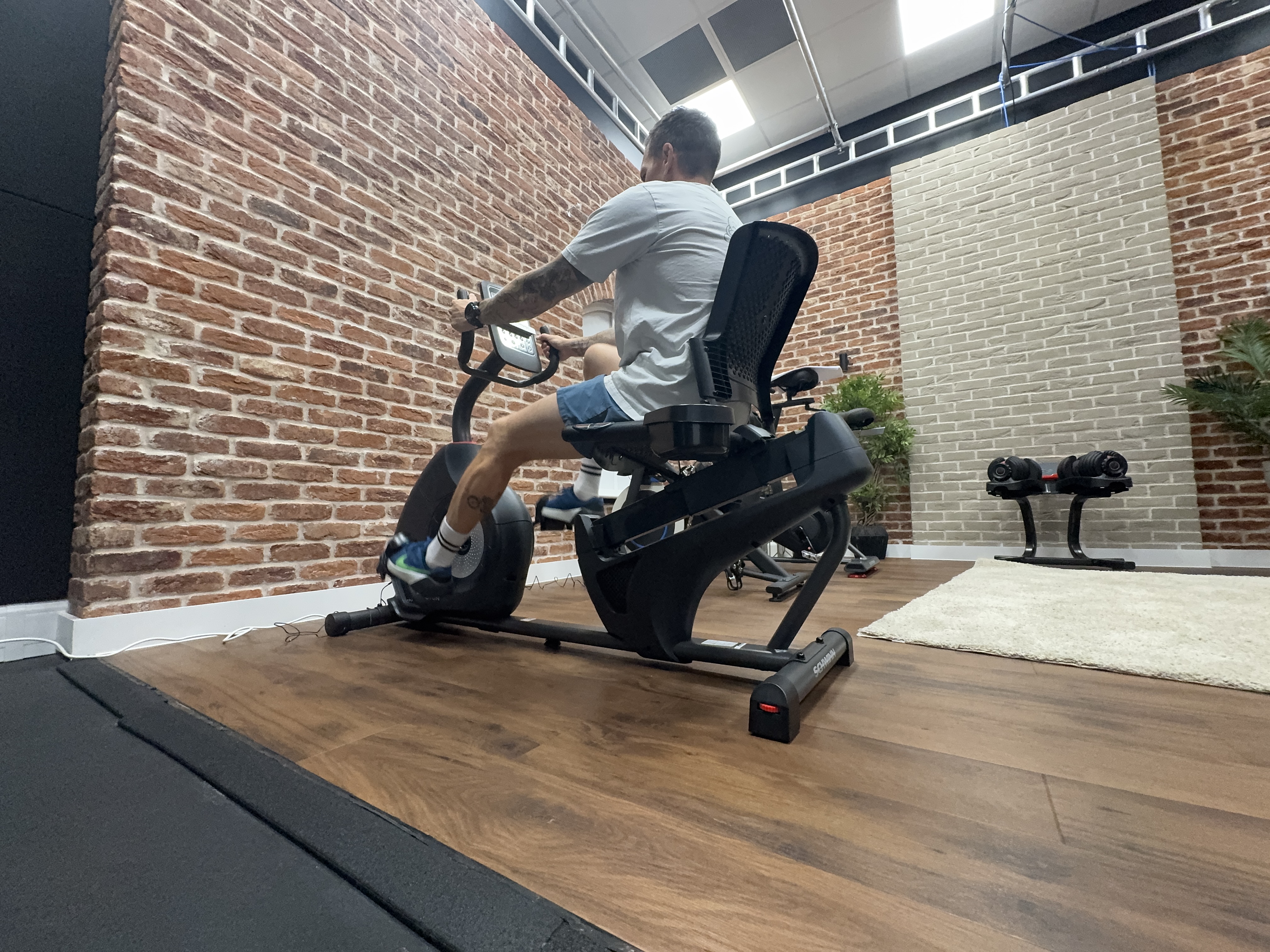
It’s also worth noting that the Schwinn 510R Recumbent Bike supports riders up to 136kg, which makes it a great fit for a wide range of users.
The step-through frame helps here too, seeing as I could stride over and sit down without having to swing a leg awkwardly over the body of the bike, which is a big win in day-to-day usability.
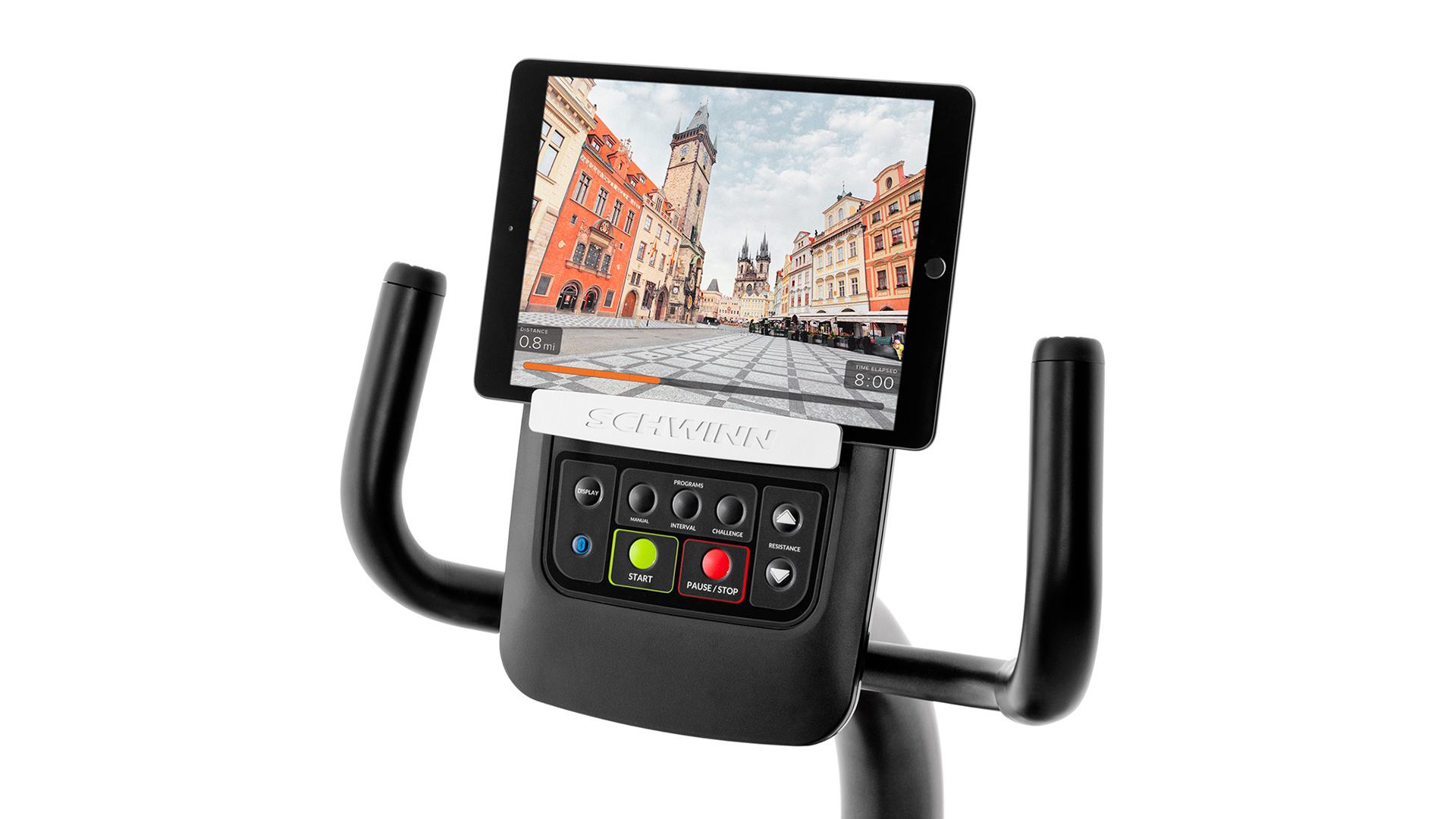
Once seated, the pedalling motion feels pretty smooth and natural. The bike uses a belt-driven flywheel paired with a manual magnetic resistance system offering 16 adjustable levels, controlled via buttons on the console.
Each resistance step feels progressive rather than jumpy, and even when I pushed into the top few levels, the mechanism stayed impressively quiet.
That said, the cranks of this bike are set fairly wide, which makes for a slightly ungainly pedalling experience. It also comes with basic plastic pedals and straps, rather than full-on cycling cleats.
However, I can’t imagine too many folk will be lacing up a dedicated cycling shoe to hit the laid-back Schwinn, as there’s no real need to transfer maximum torque through the pedals, as the seating position doesn’t really allow for it.
Do not disturb
The Schwinn 510R Recumbent Bike is one of the most discreet machines I’ve tested in this price range.
The company claims a noise output of just 32dB, which is roughly the same as a hushed conversation, and I believe it. During testing, I could pedal away happily while watching some YouTube on my phone without headphones. That makes it perfect for shared spaces or home offices.
Because it’s belt-driven, there’s also minimal maintenance required. No lubrication, no chain tensioning… just hop on and go.
Interaction is via a 5.5-inch “segmented” LCD display, which looks basic compared to touchscreen-equipped smart bikes, but does everything you need it to.
It tracks time, distance, speed, RPM, calories and heart rate, with large, clear readouts that are easy to see even in bright light. There are a handful of built-in workout programmes too — things like rolling hills or interval profiles — which automatically vary resistance for a bit of variety.
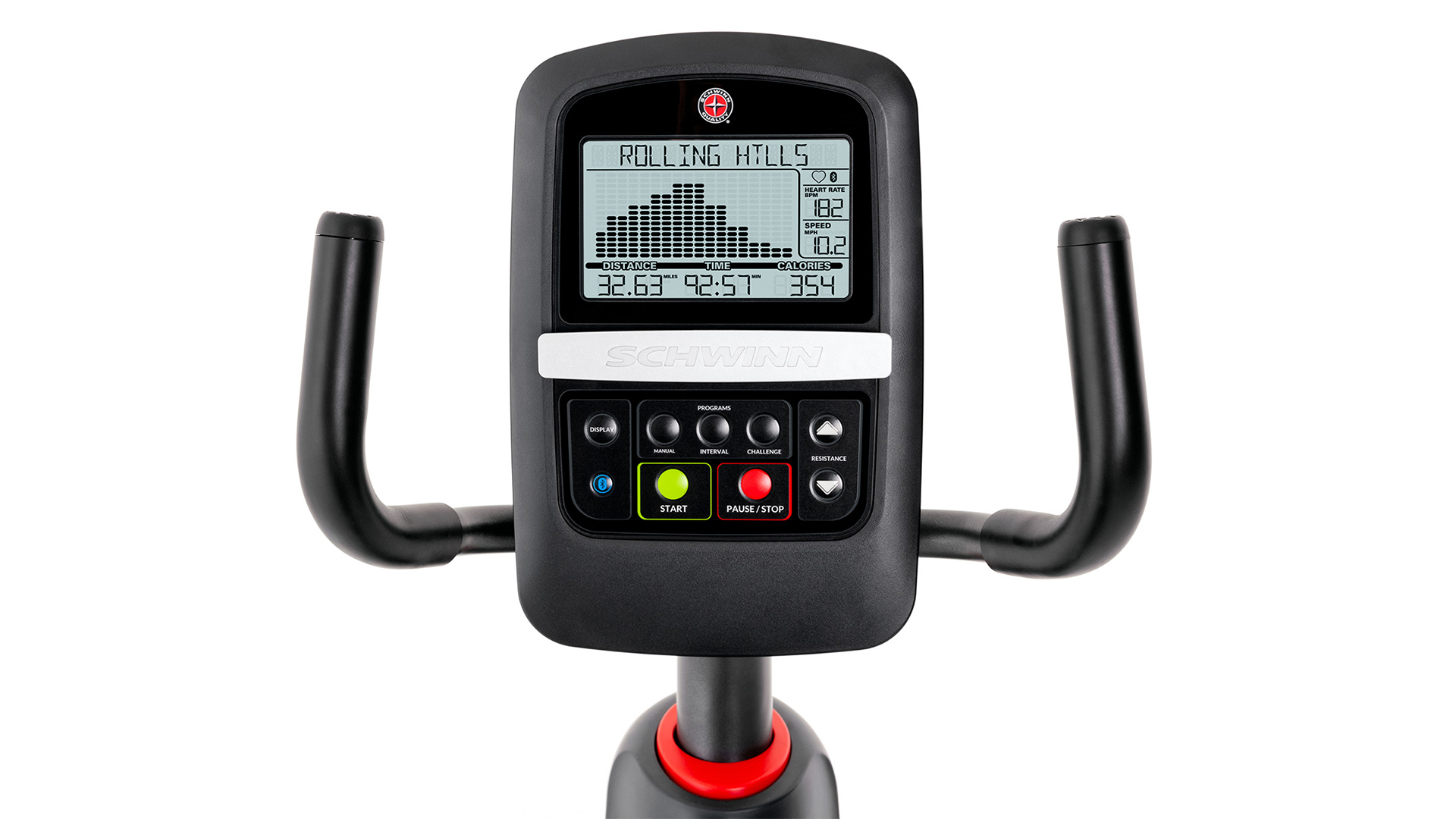
Of course, this is 2025, and no piece of fitness equipment is complete without app integration. The Schwinn 510R Recumbent Bike includes Bluetooth FTMS connectivity, so you can pair it with Zwift, Kinomap or Schwinn’s own Explore the World platform, which allows you to amble around real-world locations.
I connected mine to Zwift on an iPad, which sat neatly on the built-in media shelf positioned around midway up the console, which annoyingly blocks out the built-in screen but enough data is transferred to have the software take care of stats.
Again, this is no way near as involved or realistic as a dedicated cycling trainer from Wahoo or Wattbike, but it does the job.
It’s also possible to hook up to something like iFIT for guided session, of which there are a few workouts on the app that are recumbent bike-specific.
The connection stayed stable throughout my rides, and the resistance transitions were smooth and believable.
If you’re someone who finds motivation in gamified workouts or virtual courses, this feature alone elevates the 510R above most budget competitors.
Be still my beating heart
In terms of feel, the Schwinn 510R Recumbent Bike is fine for steady-state cardio. The pedalling motion is fluid, with no mechanical jerkiness, and resistance ramps up enough to keep intermediate riders challenged.
It’s clearly tuned for endurance rather than sprinting, so think long, aerobic sessions rather than explosive intervals. But that fits perfectly with its relaxed riding position.
One area where the Schwinn 510R Recumbent Bike stumbles, though, is its built-in heart rate sensors. These are mounted on the handlebars beside the seat, but readings were often inaccurate during testing.
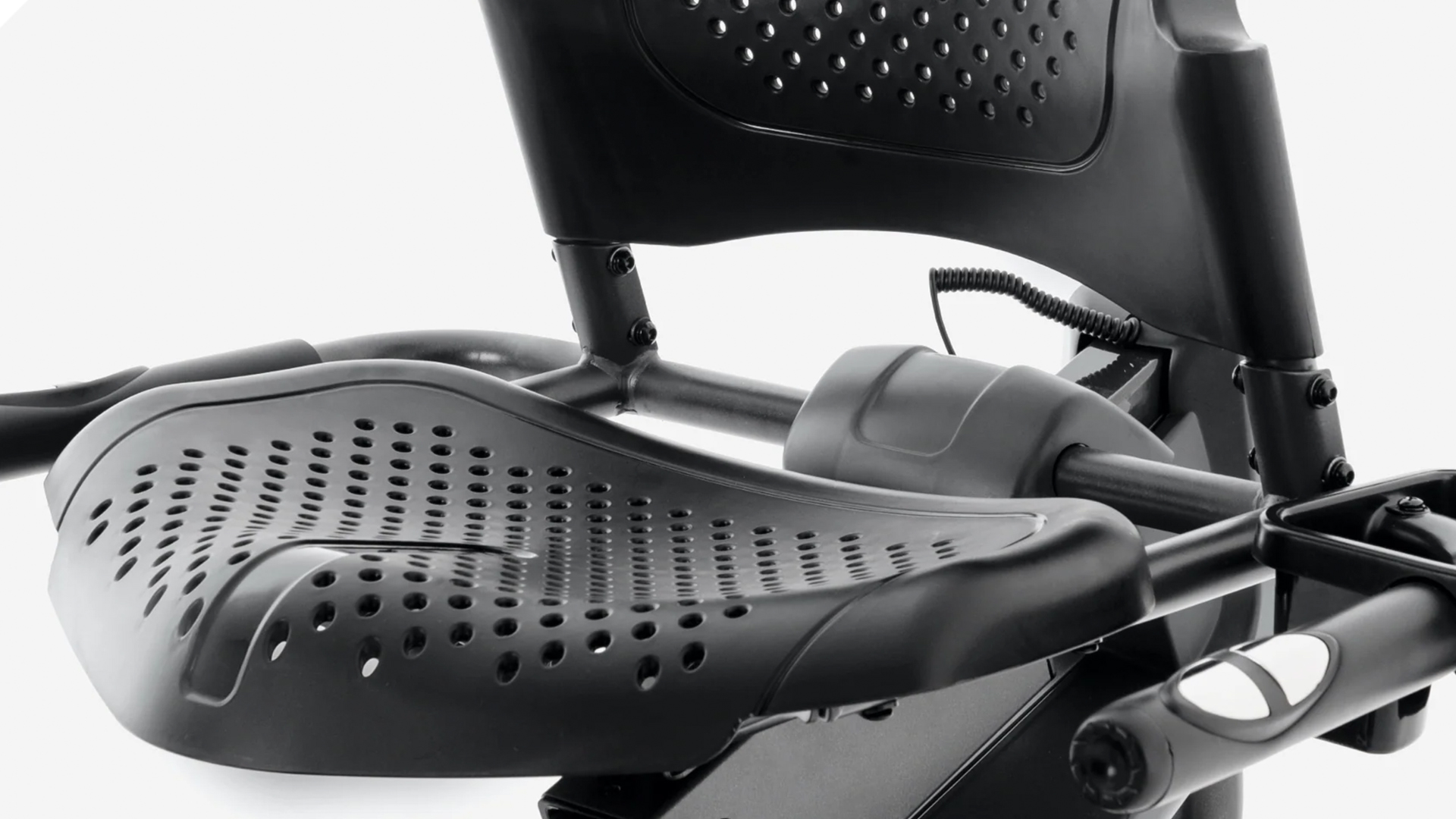
On one ride, the console claimed I was pushing 190bpm when my Garmin smartwatch showed a more believable 135bpm. Thankfully, the bike supports wireless heart-rate straps over Bluetooth, so if you’re serious about tracking your training zones, you can easily pair a strap (though you’ll need to buy it separately).
While it’s not gym-grade in its construction, the Schwinn 510R Recumbent Bike feels robust enough for regular home use. The steel frame gives a reassuring sense of strength, even during high-resistance efforts, and there’s very little lateral flex. The pedal cranks are solid, the straps stay secure, and the overall finish is decent for something in this price bracket.
In it for the long run
While it’s not gym-grade in its construction, the Schwinn 510R Recumbent Bike feels robust enough for regular home use.
The steel frame gives a reassuring sense of strength, even during high-resistance efforts, and there’s very little lateral flex. The pedal cranks are solid, the straps stay secure, and the overall finish is decent for something in this price bracket.
I did notice that the plastic casing around the flywheel can pick up scuffs if you’re careless during assembly, and some of the bolt covers don’t quite sit flush. But these are cosmetic niggles rather than functional problems. More importantly, the bike feels planted and stable under load.
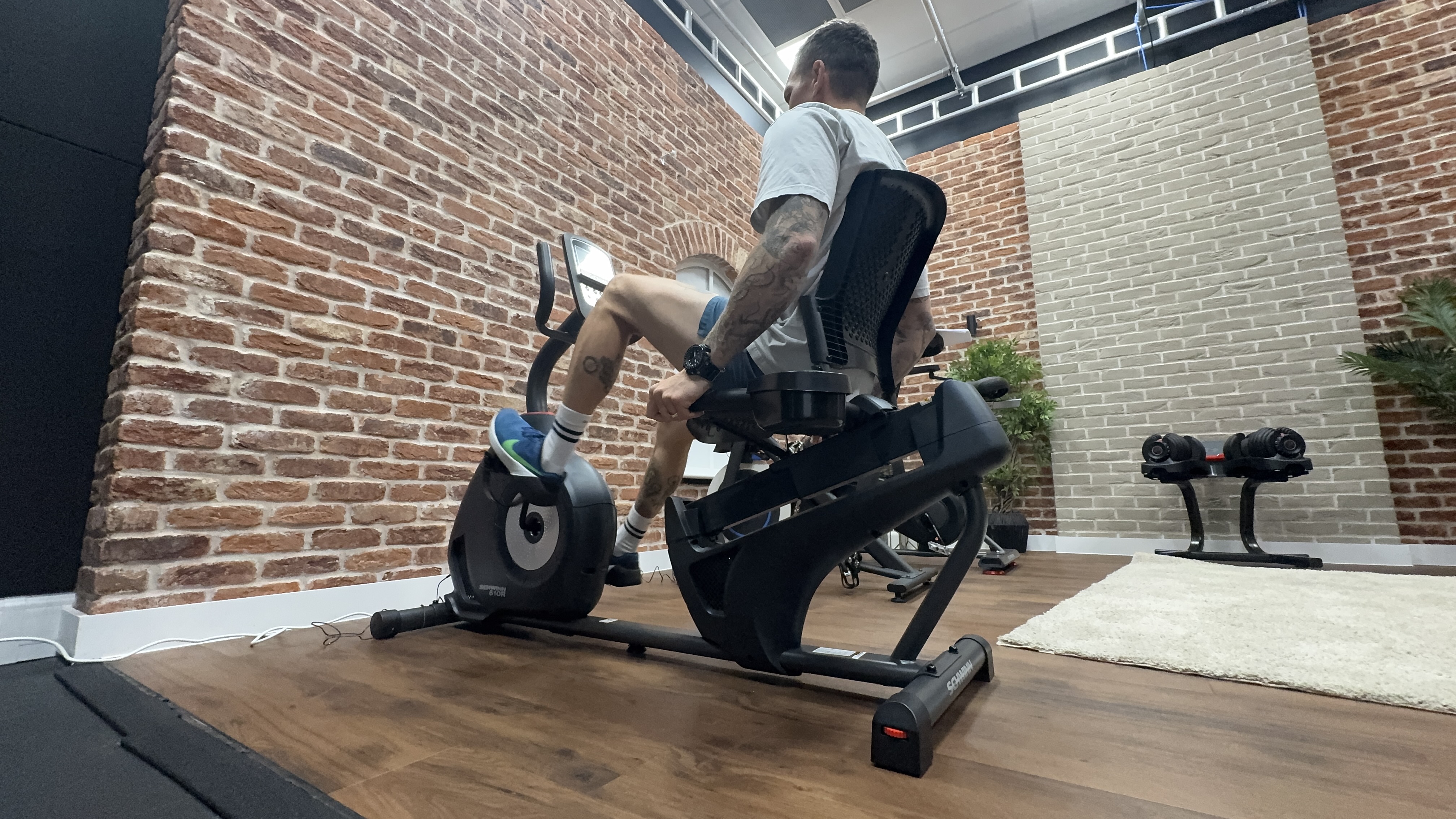
For the money, you’re getting a well-built, whisper-quiet and properly comfortable exercise bike that plays nicely with the best training apps on the market.
Sure, it lacks the polished feel and high-end materials of premium rivals, and that heart-rate sensor is practically ornamental, but those compromises are easy to live with when the fundamentals are there.
Compared to something like the Life Fitness recumbent, the Schwinn 510R Recumbent Bike is less robust but dramatically more affordable. It’s really easy to live with, although it does run the risk of becoming too easy for those looking to really push their fitness.
But for anyone suffering from mobility issues or recurring injuries, it’s perfect.
Plus, it’s absolutely brilliant for the sort of steady-state cardio that requires little more than firing up a favoured streaming service and casually watching the calorie burn rise.







